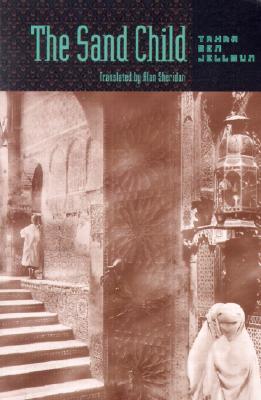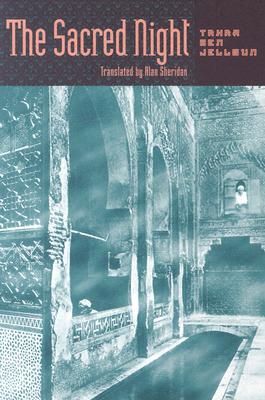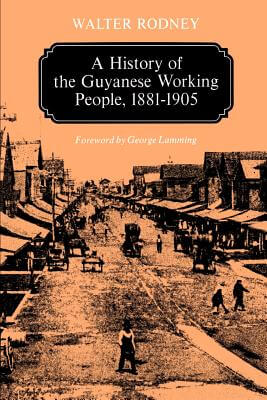5 Books Published by Johns Hopkins University Press on AALBC — Book Cover Collage
 The Sand Child
The Sand Child
by Tahar Ben JellounJohns Hopkins University Press (May 31, 2000)
Read Detailed Book Description
In this lyrical, hallucinatory novel set in Morocco, Tahar Ben Jelloun offers an imaginative and radical critique of contemporary Arab social customs and Islamic law. The Sand Child tells the story of a Moroccan father’s effort to thwart the consequences of Islam’s inheritance laws regarding female offspring. Already the father of seven daughters, Hajji Ahmed determines that his eighth child will be a male. Accordingly, the infant, a girl, is named Mohammed Ahmed and raised as a young man with all the privileges granted exclusively to men in traditional Arab-Islamic societies. As she matures, however, Ahmed’s desire to have children marks the beginning of her sexual evolution, and as a woman named Zahra, Ahmed begins to explore her true sexual identity. Drawing on the rich Arabic oral tradition, Ben Jelloun relates the extraordinary events of Ahmed’s life through a professional storyteller and the listeners who have gathered in a Marrakesh market square in the 1950s to hear his tale. A poetic vision of power, colonialism, and gender in North Africa, The Sand Child has been justifiably celebrated around the world as a daring and significant work of international fiction.
 The Sacred Night
The Sacred Night
by Tahar Ben JellounJohns Hopkins University Press (May 30, 2000)
Read Detailed Book Description
The Sacred Night continues the remarkable story Tahar Ben Jelloun began in The Sand Child. Mohammed Ahmed, a Moroccan girl raised as a boy in order to circumvent Islamic inheritance laws regarding female children, remains deeply conflicted about her identity. In a narrative that shifts in and out of reality moving between a mysterious present and a painful past, Ben Jelloun relates the events of Ahmed’s adult life. Now calling herself Zahra, she renounces her role as only son and heir after her father’s death and journeys through a dreamlike Moroccan landscape. A searing allegorical portrait of North African society, The Sacred Night uses Arabic fairy tales and surrealist elements to craft a stunning and disturbing vision of protest and rebellion against the strictures of hidebound traditions governing gender roles and sexuality.
 The Garies and their Friends (Race in the Americas)
The Garies and their Friends (Race in the Americas)
by Frank J. WebbJohns Hopkins University Press (Sep 23, 1997)
Read Detailed Book Description
In this novel set in antebellum America, the Garies?a white southerner, his mulatto slave-turned-wife, and their two children?have moved to Philadelphia from Georgia.Originally published in London in 1857, The Garies and Their Friends was the second novel published by an African American and the first to chronicle the experience of free blacks in the pre-Civil War northeast. The novel anticipates themes that were to become important in later African American fiction, including miscegenation and "passing," and tells the story of the Garies and their friends, the Ellises, a "highly respectable and industrious coloured family." "It is remarkable that, even as the study of African American literature and culture has become central to any number of projects within American intellectual life, so little attention has been given a work as significant as Frank J. Webb’s The Garies and Their Friends."?from the 1997 introduction by Robert Reid-Pharr
 The Devastation of the Indies: A Brief Account
The Devastation of the Indies: A Brief Account
by Bartolomé de Las CasasJohns Hopkins University Press (Feb 01, 1992)
Read Detailed Book Description
Five hundred years after Columbus’s first voyage to the New World, the debate over the European impact on Native American civilization has grown more heated than ever. Among the first—and most insistent—voices raised in that debate was that of a Spanish priest, Bartolome de Las Casas, acquaintance of Cortes and Pizarro and shipmate of Velasquez on the voyage to conquer Cuba. In 1552, after forty years of witnessing—and opposing—countless acts of brutality in the new Spanish colonies, Las Casas returned to Seville, where he published a book that caused a storm of controversy that persists to the present day. The Devastation of the Indies is an eyewitness account of the first modern genocide, a story of greed, hypocrisy, and cruelties so grotesque as to rival the worst of our own century. Las Casas writes of men, women, and children burned alive "thirteen at a time in memory of Our Redeemer and his twelve apostles." He describes butcher shops that sold human flesh for dog food ("Give me a quarter of that rascal there, " one customer says, "until I can kill some more of my own"). Slave ship captains navigate "without need of compass or charts, " following instead the trail of floating corpses tossed overboard by the ship before them. Native kings are promised peace, then slaughtered. Whole families hang themselves in despair. Once-fertile islands are turned to desert, the wealth of nations plundered, millions killed outright, whole peoples annihilated. In an introduction, historian Bill M. Donovan provides a brief biography of Las Casas and reviews the controversy his work produced among Europeans, whose indignation—and denials—lasted centuries. But the book itself is short. "Were I t describe all this, " writes Las Casas of the four decades of suffering he witnessed, "no amount of time and paper could encompass this task."
 A History Of The Guyanese Working People, 1881-1905 (Johns Hopkins Studies In Atlantic History And Culture)
A History Of The Guyanese Working People, 1881-1905 (Johns Hopkins Studies In Atlantic History And Culture)
by Walter RodneyJohns Hopkins University Press (Sep 01, 1981)
Read Detailed Book Description
Completed shortly before Walter Rodney’s assassination in June 1980, A History of the Guyanese Working People, 1881-1905 provides an original, well-informed, and perceptive contribution to the historiography of nineteenth-century Guyanese society. This comprehensive examination encompasses the history of African and Asian immigration into Guyana, the interaction of ethnic groups, the impact of British colonialism, economic and political constraints on the working class, and the social life of the masses.
Rodney argues that the social evolution of the Guyanese working people has been guided by specific material constraints and extremely powerful external focuses from Europe, Africa, Asia, and North America. He emphasizes the destructive fragmentation of the working class along ethnic, political, and social lines, encouraged by the legacy of slavery, post slavery immigration, legal distinctions between various classes of labor, and the economic bases of the society. in contrast to the well-defined middle and upper classes, the working people appeared divided, disorganized, and leaderless. Rodney’s account ends in 1905, when the hardships and frustrations of the masses exploded into violence.
A History of the Guyanese Working People, 1881-1905 will stand alone as a landmark study of the profound social upheaval that characterized Guyanese society in the years following emancipation. Anyone interested in the problems of underdeveloped nations, labor control, and the after-effects of colonialism and imperialism will appreciate the significance of this work.
